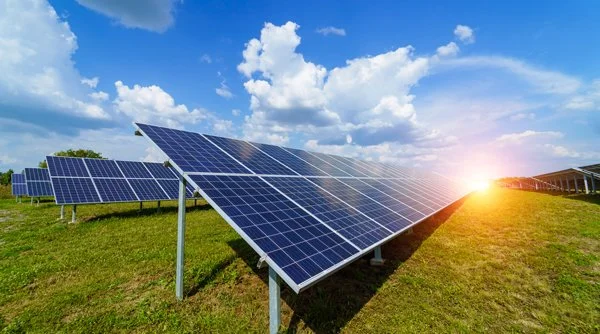Utility-scale refers to large-scale energy projects that generate electricity for distribution to a wide area or grid. These projects typically produce significant amounts of electricity, often in the range of megawatts (MW) or even gigawatts (GW). It installations play a crucial role in meeting the energy demands of regions, countries, or entire utility grids.
Key Characteristics of Utility-Scale Projects

Utility-scale solar project. Source.
Utility-scale projects have several key characteristics:
- Large Capacity: These projects have a high generating capacity, allowing them to produce substantial amounts of electricity to meet the demands of a large population or geographical area.
- Grid Integration: These projects are interconnected with the utility grid, enabling the electricity they generate to be transmitted over long distances and distributed to consumers through the existing power infrastructure.
- Economies of Scale: Due to their size, these projects often benefit from economies of scale, resulting in lower costs per unit of electricity generated.
- Diverse Technologies: These projects encompass a wide range of energy technologies, including conventional fossil fuel-based power plants (such as coal, natural gas, and oil), as well as renewable energy sources like solar, wind, hydroelectric, and geothermal power.
Main applications
Utility-scale projects serve various applications and purposes, including:
Baseload Power Generation
Large power plants, such as coal or nuclear facilities, provide continuous, reliable electricity supply to meet the baseload demand of utility grids.
Renewable Energy Deployment
Utility-scale renewable energy installations, such as solar and wind farms, contribute to decarbonizing the energy sector by harnessing clean and sustainable sources of power.
Grid Stability and Reliability
These projects enhance grid stability and reliability by supplying a consistent and dependable source of electricity to meet fluctuating demand and support grid balancing.
Benefits of Utility-Scale Energy Projects
The development and deployment of utility-scale projects offer several advantages, including:
Scalability
these projects can be scaled up or down to match the energy needs of specific regions or utility grids, providing flexibility and adaptability to changing demand conditions.
Cost-Effectiveness
These projects can achieve lower generation costs per unit of electricity, resulting in cost savings for consumers and utilities.
Energy Security
Large-scale energy projects contribute to energy security by diversifying the energy mix, reducing dependence on imported fuels, and enhancing domestic energy production capacity.
Environmental Benefits
Utility-scale renewable energy projects help lower greenhouse gas emissions and reduce air pollution. They minimize environmental impacts linked to conventional fossil fuel-based power generation.
Conclusion
In summary, utility-scale energy projects utilize large-scale resources to meet the energy needs of modern societies. As the world moves towards a more sustainable energy future, its installations will remain crucial to the global energy landscape. They provide reliable and affordable electricity to power our communities and economies.
Frequently asked questions
What exactly is a utility-scale energy project?
A utility-scale energy project refers to large-scale installations designed to generate electricity for distribution to a wide area or grid. These projects boast high generating capacities from megawatts to gigawatts. They connect with the utility grid to supply power over long distances.
What are the main characteristics of them?
These projects have several key characteristics that distinguish them from smaller-scale energy installations. These facilities have a large capacity to produce electricity. They integrate with the grid for distribution. Economies of scale are leveraged for cost-effectiveness. Diverse energy technologies, such as solar, wind, and hydro, are incorporated.
What are the primary applications?
Utility-scale projects have multiple applications and purposes. They provide baseload power generation for continuous, reliable electricity demand. These projects deploy renewable energy sources, such as solar and wind, to decarbonize the energy sector. They enhance grid stability and reliability by supplying consistent electricity and supporting grid balancing.






